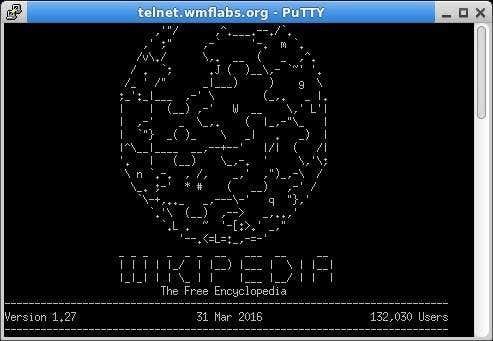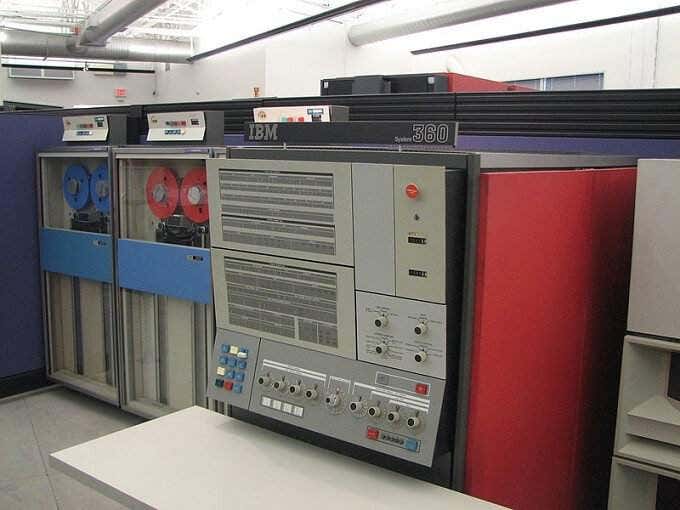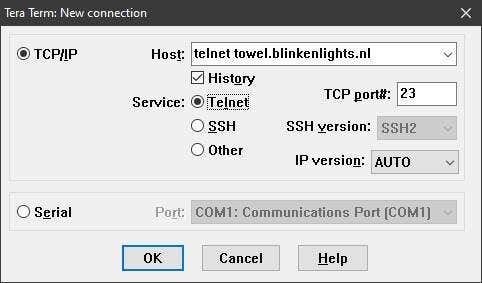In fact, most of the internet isn’t related to the web at all, but rather a whole slew of other internet services that use various “protocols”. HTTP or hypertext transfer protocol is used to serve websites to your browser, as one example. Telnet is also an internet protocol, but one with a different history and some interesting uses. But what is telnet? In this article you’ll learn just that.
What Is Telnet?
Tim Starling (WMF) / CC BY-SA (https://creativecommons.org/licenses/by-sa/4.0) Telnet is a text-based network protocol that lets a client (that’s you) communicate with a remote computer, somewhere out there on the internet. Usually, Telnet connections run over Port 23 and, just like websites, Telnet services have a specific address. In the past, you may have used a dedicated terminal to access a Telnet service. Terminals aren’t really full computers, but simply devices that provide a remote “face” for a distant computer. These days, just about everything from a smartwatch to a smart TV has full computing power, so dumb terminals don’t really get much use anymore. In order to use a Telnet service today, you’ll need an application known as a terminal emulator. The good news is that there are a whole bunch of great free terminal emulators out there for every operating system. You might be thinking that Telnet doesn’t sound all that relevant anymore. While it is a more obscure internet service, there’s a sizable and dedicated Telnet community worldwide. It also still has a very important role in low-bandwidth remote computer management. Which means that not only is Telnet far from dead, it still has a bright future ahead of it. Before we get to that, however, let’s take a quick look at where Telnet came from.
A Brief History Of Telnet
Erik Pitti / CC BY (https://creativecommons.org/licenses/by/2.0) Before the internet of today, there was ARPANET. A military and academic computer network at a time when the only people who had computers worked for government agencies or institutions. The computers in question were massive machines that filled entire rooms. This was before the idea of a personal computer was on anyone’s mind. Getting computers to talk to each other over this new network was no easy task. Mainly because these machines each had very different designs and architectures from one another. What was needed is a single shared language. In 1971, the first proposal for the Telnet protocol was drafted. However, It would take more than a decade for Telnet itself to be released as a working technology. In 1983, the very first iteration of telnet protocol was released to the world.
Telnet As A Remote Management Tool
Telnet can be used to send commands to remote systems and therefore control them through the terminal interface. This is rarely done these days, with the SSH (Secure Shell) protocol mostly replacing the purpose and function of Telnet. However, Telnet is still important, because systems that run operating systems from previous eras, but are still in use today, might only be accessible through Telnet. Some internet appliances, such as certain routers, might also only respond to Telnet commands. That’s actually one of the key advantages of Telnet. It’s such an old and fundamental protocol that it can often be relied upon to work reliably and consistently. After all, it’s purpose was to be a universal language for computers to send and receive commands. However, it should not be used as a first-line technology if at all possible. Secure Shell is generally the best choice in almost every situation,
What Is Telnet vs Secure Shell
Telnet was developed at a time when the idea of cyber security wasn’t really on anyone’s mind. Since only trusted actors had computers with network access, the idea that someone would hack into a computer was pretty far-fetched. Today billions of people have a computer as well as an internet connection. Hackers are constantly attacking remote systems, which means that they are always looking for a new vulnerability. Since Telnet sends its commands in plain text and everyone knows which network port it uses by default, it’s fairly trivial to intercept or modify the data. Secure Shell solves this issue by using strong encryption on all the data it sends and receives. This is one of the main reasons it has supplanted Telnet. That being said, these days there are also ways of applying encryption to Telnet, though it’s not an integrated part of the protocol
How To Access A Telnet Service
To connect to a Telnet service, all you need is a terminal emulator and the address of the computer you want to connect to. There are plenty of terminal emulators. Most of them are free. In this case we’re going to use the popular Tera Term. As a demonstration, we’ll connect to a Telnet service that uses ASCII text to retell the entire first Star Wars film. Usually, with a traditional terminal application you’d type “telnet” followed by a space and the address of the service. You may also have to specify the port in the command, which is usually port 23 for Telnet. However, Tera Term has a graphical interface, so all we have to do is fill in the screen like so. As you can tell, the address for this service is towel.blinkenlights.nl. With everything configured as above, just click OK and this happens. Awesome! Right? Let’s not stop the fun there. Here are some more Telnet services you can play around with while you have that terminal app out.
Cool Telnet Services
Now that we’ve covered the essential facts about Telnet, there’s no better way to round off this crash course than to point you in the direction of some interesting places you can visit right now. Telnet.org maintains a huge list of Telnet places to visit. You should head over there to get the more obscure destinations, but here are the highlights most people will get a kick out of:
Free ChessCheck the weather!ANSI Nyancat meme
From here you’re on your own. But if you’ve the patience, the world of Telnet can be pretty rewarding to explore and experiment with. You’ll be dreaming in ASCII in no time!







